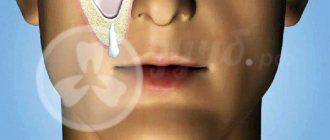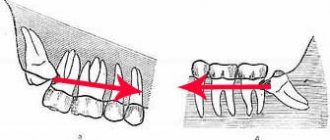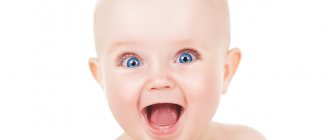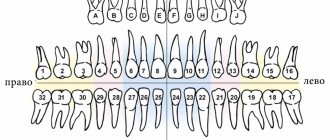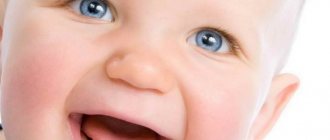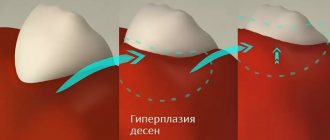Why do temporary teeth fall out?
The process of changing elements of the dentition does not happen just like that. The appearance of the first teeth occurs between the ages of 6 and 9 months, when children begin to eat not only mother's milk, but also denser foods. At the same time, the dimensions of the maxillofacial apparatus are small, and therefore the dimensions of the first teeth are quite compact. Over the years, primary teeth are no longer able to perform chewing functions properly, and the jaw enlarges. As a result, it is able to accommodate all molars.
Technology of growing teeth from stem cells
The last 30 years in biology and medicine can safely be called a boom in the study of stem cells. These cells attract the attention of scientists for the simple reason that they can become a source of youth, and, according to the most daring forecasts, immortality.
Stem cells are undifferentiated. During their life, they can transform into any other specialized cell. In an adult, the stem cell reserve is limited. At some point, there are critically few of them, which does not allow organs and systems to maintain the same level of functionality. Therefore, it is believed that stem cell procedures can rejuvenate the body.
The most interesting quality of stem cells is their ability to specialize into other cells. This opens the way for scientists to grow tissues and organs. Relatively speaking, you can take a certain number of stem cells from a patient, multiply them in the laboratory, and then, using special stimulants and conditions, force these cells to transform, for example, into cells of the heart, liver, kidneys, muscles, and so on. To do this, an organ frame is initially created, onto which stem cells are applied using a bioprinter (where cells are used instead of ink). Theoretically, growing a tooth is possible using this technology. Today, American, British, Japanese and Chinese researchers are working closely on this.
So far, the external method of growing teeth (outside the body) seems difficult. For this reason, scientists are focused on the technique of implanting tooth germs into the jaw (an internal method of growing teeth). This will allow you to achieve a second change of teeth, and then a third (if necessary).
As mentioned above, germ cells of teeth taken from embryos are used for these purposes. As you might guess, such a procedure is impossible in humans for ethical reasons. Therefore, scientists propose using stem cells that can be “trained” so that they turn into rudimentary dental cells. And these cells are already planted in the jaw. This technique has been tested more than once on animals. Let us note that such research progresses every year, and teeth grown in this way are getting closer in their characteristics to natural teeth.
Approximate timing and sequence of shifts
According to a large number of parents, the process of changing primary teeth begins when children lose their first tooth, which usually occurs at the age of about 6-7 years. But this is a wrong opinion, because this process begins long before this moment. After reaching the age of 4, children's third molars, which are molars, emerge. It is from this moment that the countdown begins.
Around the same time, the roots of primary teeth dissolve, which takes up to 24 months. During the resorption of root tissues, the baby tooth begins to wobble, and by the time the permanent ones appear, the corresponding element of the dentition is pushed out.
The sequence of teeth changing is approximately the same as the order in which they erupt. First, the central lower incisors fall out, after which a similar change of upper teeth occurs. Then the lateral incisors, first molars, canines and large molars are gradually replaced. The change of the first milk tooth and the loss of the last one can occur at different ages; the differences can reach 2 years. According to some experts, girls lose their baby teeth earlier than boys.
The table shows an approximate schedule for the replacement of temporary teeth with molars.
| Baby teeth | Beginning and duration of dissolution of the root of a temporary tooth | Age |
| Central lower incisors | From 6 years (within 24 months) | 6-7 years |
| Central upper incisors | From 6 years (within 24 months) | 6-7 years |
| Lateral lower incisors | After 6 years (within 24 months) | 7-8 years |
| Upper lateral incisors | After 6 years (within 24 months) | 7-8 years |
| Small (first) upper molars | From 7 years (within 36 months) | 8-10 years |
| Small (first) lower molars | From 7 years (within 36 months) | 8-10 years |
| Upper canines | From 8 years old (for 36 months) | 9-11 years |
| Lower canines | From 8 years old (for 36 months) | 9-11 years |
| Large (second) lower molars | After 7 years (within 36 months) | 11-13 years old |
| Large (second) upper molars | After 7 years (within 36 months) | 11-13 years old |
How new teeth are grown
Many people have asked the question of how to grow new teeth. The fact that permanent teeth grow only once prompts scientists to take a closer look at this issue. After all, if the jaw was once able to “produce” teeth, we need to help it do it again.
Back in the 80s of the last century, scientists began to try to make the idea of growing teeth a reality. At that time, research was carried out on the transplantation of dental embryos from human embryos. The technology turned out to be complex, so it was never widely used in medical practice. We propose to consider the most significant achievements in this matter over the past 20 years:
- 2002 - in the UK, scientists managed to grow a whole tooth from different cells. At the same time, the tooth was characterized by increased fragility, and therefore could not pass for a candidate for use in practice.
- 2007 – Japanese scientists managed to grow teeth in laboratory mice. However, such teeth were devoid of roots.
- 2009 – stem cells were used to grow both teeth and their roots in laboratory animals. Compared to 2007, this is a clear success. The only problem is that the grown teeth turned out to be smaller in size than the mice’s natural teeth.
- 2013 – Scientists from China have attempted to grow human teeth on the jaws of laboratory mice. For this purpose, stem cells obtained from human urine were used.
- 2015 – tooth growing moves to new frontiers. Scientists manage to grow teeth using stem cells on a pre-prepared frame.
- 2017 – Scientists are using one of the experimental substances to combat Alzheimer's disease as a stimulator for stem cells. Scientists are able to enhance the reproduction, as well as the specialization of cells. In particular, it was possible to direct the specialization of cells towards the formation of odontoblasts - which form dentin.
- 2018 – Researchers are able to direct the growth of apatite nanocrystals using synthetic biopolymers. It is noteworthy that growth occurs in a similar way in the human body.
- 2020 – American scientists have used stem cells to grow teeth. The animal experiment was successful. The tooth germs introduced into the jaw formed teeth after 9-10 weeks. The same group of American scientists conducted a study on growing teeth on a pre-prepared frame made of natural materials. Stem cells adapt well to the elements of the frame and form the corresponding tooth structures.
Nutrition during the period of changing baby teeth
The enamel of the molars is not fully formed when they erupt. This process lasts several years, so a nutritious diet with properly selected products is of great importance:
- Every day the child should eat food containing large amounts of calcium (milk and dairy products).
- In some cases, if the baby does not want to consume dairy products, it is recommended to take vitamins with a high calcium content.
- Fruits and vegetables, some of them should be consumed in solid form in order to more quickly dissolve milk roots and erupt molars.
- It is recommended to include fish dishes containing phosphorus in your diet twice a week. It is better to give children low-fat varieties, including pike perch, hake and pollock.
- Eliminate chocolate, white pastries and sweets from your diet. Sweet soda is considered the most dangerous for tooth enamel.
During the change of baby teeth, it is necessary to avoid the consumption of sticky or hard foods, including toffees, nuts and candies. Otherwise, you can damage the temporary tooth or cause it to fall out too early, which often causes problems in the growth of permanent teeth. In addition, children should not eat food that contains active dyes, which can negatively affect the color of the enamel of permanent teeth without the possibility of further changing it.
Care instructions
Since the enamel is not yet fully formed during the eruption of molars, great attention should be paid to proper oral hygiene and preventive measures to prevent the development of caries.
- In the morning and evening, teeth should be brushed using a soft brush that does not damage the gums. Children are recommended to use special toothpastes with a high content of calcium and fluoride. It is better to brush your teeth under adult supervision, as children often do it too quickly and not thoroughly enough.
- All children should visit the dentist twice a year for an examination, professional cleaning, and timely detection and treatment of tooth decay.
- After any meal, children should rinse their mouths with plain water, a special baby mouthwash, or chamomile infusion. Thanks to this, plaque will not accumulate on the teeth and the likelihood of developing an inflammatory process in the eruption zone of the molar will decrease.
Medical Internet conferences
Prospects for the development of technology for growing teeth in dentistry
Pashkevich V. D.
Scientific supervisor: Ph.D., ass. Savina E. A.
GBOU VPO Saratov State Medical University named after. IN AND. Razumovsky Ministry of Health of the Russian Federation
Department of Propaedeutics of Dental Diseases
Doctors say one of the main reasons for the rapid loss of teeth in our population is poor oral hygiene. Despite the fact that each of us was probably taught to brush our teeth in childhood, no more than 30% of the country’s population does this with all the necessary nuances. According to statistics, more than 50% of people brush their teeth for 46 seconds, which is absolutely useless.
The result is disappointing. According to the national epidemiological dental survey of the Russian population, the incidence of caries in the adult population of the Russian Federation reaches the same 95–100%, but signs of periodontal disease in people over 35 years of age occur in 81% of cases.
All this encourages modern science to come up with new ways to restore teeth. Recently, teeth growing technologies have been actively developing in dentistry.
Growing teeth is a promising bioengineering technology, the ultimate goal of which is the creation/recreation of full-fledged new molars in humans or animals.
And although the technique was tested only on laboratory mice, scientists hope in the future to save people from organ transplants or implantation of dentures.
Researchers from several research centers in Japan have successfully solved one of the most difficult problems facing medicine and grown a new incisor from a small piece of specially treated tissue. They managed to obtain a living and functional organ from several cells. In the future, instead of metal-ceramic implants, patients may be able to achieve the growth of their full teeth. The researchers grew the new tooth from a small group of cells obtained through complex manipulation of mouse stem cells. By combining two different types of stem cells inside a drop of a special gel and subjecting them to additional processing, scientists first obtained an embryo of a future tooth. Next, a mixture of two types of cells was placed in the hole left in the mouse in the place of the incisor that was previously removed under anesthesia. To track the growing tissue, a green fluorescent protein gene was added to the cells. The fluorescent protein made it possible to see exactly where the cells of the artificial tooth migrated, and to make sure that along with the teeth, no neoplasms appeared in the rodents.
In the journal Proceedings of the National Academy, scientists published the results of numerous tests of the new tooth. On X-rays and photographs it does not differ from ordinary ones, and in strength it is not inferior to a mouse’s own teeth. The “newbie” turned out to have equally strong enamel, and it was just as firmly entrenched in the jaw, maintaining the natural level of sensitivity: nerves and blood vessels had sprouted inside the tooth.
Premature loss
This refers to the loss of baby teeth when the child has not yet reached the age of 6. Causes may include caries, special loosening and mechanical damage. If a tooth falls out long before the molar begins to grow, a space will appear in the oral cavity that will later be occupied by the remaining teeth. Eventually, permanent teeth will begin to erupt unevenly due to lack of space.
If you experience early tooth loss, you should contact an orthodontist. Often today, in such situations, prosthetic technologies are used, the main task of which is to prevent the displacement of other elements of the dentition. This solution helps prevent the development of malocclusion and the appearance of various visual defects.
Growing teeth - myth or reality
Once upon a time, a person was a single cell, from which the germ layers were subsequently formed, and from them - separate organ systems.
Even at the beginning of the last century, biologists understood that the process of growing new tissue or organ was theoretically possible. In practice, this was difficult to implement due to the lack of necessary conditions and a deep understanding of the relevant processes. Today, tissue growing is a reality. In laboratories, for example, you can grow skin. By the way, this technology is already used for burn patients. As for growing organs, there are successes here too, although not yet of a medical nature. A simplified model of this process is as follows: using a bioprinter, cells that form organ tissue are applied to the frame. In this case, instead of ink, the bioprinter contains stem cells, which, after being applied to the frame, are specialized into the appropriate cells (for example, cells of the heart, kidneys, liver, and so on).
If you think that growing teeth is easier than growing other organs, you are mistaken. Teeth grow from many different types of cells. In particular, ameloblasts form enamel; odontoblasts – dentin; cementoblasts - cement. In addition, formed teeth also contain immune system cells and receptors that detect changes in pressure and temperature.
One of the problems that scientists face when trying to grow teeth is the origin of tooth precursor cells. Thus, ameloblasts come from the ectoderm (the outer layer of the embryo), odontoblasts and cementoblasts come from the neural crest (the fourth germ layer). In other words, researchers are faced with the task of mixing different types of cells in certain proportions. In addition, these cells need to be given the conditions so that they can specialize into tooth precursor cells. For this reason, no one has yet been able to grow a tooth outside the body. Scientists are still working on how to force the jaw to grow new teeth when for natural reasons this is no longer possible. This approach seems feasible at this stage of scientific development. Completely growing a tooth “in vitro” is a matter of several decades, unless epochal changes in technology occur in the foreseeable future.
Replacement too late
In some cases, the molars are already erupting, although the milk teeth are not yet loose. Often this also leads to the appearance of certain defects. The solution to the problem is to visit a specialist to remove a baby tooth.
It also happens that molars do not appear in the standard time frame. In this case, temporary teeth may be present or fall out. Reasons for this phenomenon:
- Physiological factor. The development of tooth germs occurs properly, but their growth is too slow for certain reasons.
- Retention of molars. The tooth germs are formed in a timely manner, but the location of the permanent tooth inside the jaw bone tissue is incorrect.
- Partial primary adentia. During the development of the child inside the mother's womb, the proper laying of the rudiments did not take place or their death occurred due to inflammation.
To detect such defects and determine the exact reasons for untimely replacement of baby teeth, a specialist uses x-ray examination, which allows us to determine the characteristics of the formation of tooth germs. If developmental defects are detected, children are prescribed temporary prosthetics for the period of active jaw growth. After reaching a certain age, permanent dentures are installed.
When does a person get wisdom teeth?
The lack of space for the third molar in the dentition is associated with changes in the masticatory apparatus during human evolution. In 15% of the world's population, wisdom teeth do not develop at all and are in the form of rudiments in the jaw. In 20%, the rudiments of wisdom teeth in the upper or lower jaw are completely absent. And in most people, wisdom teeth are positioned incorrectly already at the rudimentary stage. They may not erupt, but remain in the bone tissue of the jaw, or they may erupt partially or incorrectly. As a rule, these problems, due to a lack of space, create a number of pathological conditions that can only be solved by specialists in maxillofacial surgery.
One of the features of wisdom teeth is that they are located last in the dentition. This means that they are supported by adjacent teeth (molars) on only one side, which gives them the ability to tilt to the side.
It happens that the eruption of wisdom teeth does not cause any problems and they last a lifetime with proper care. There are known rare cases when not only wisdom tooth root caries is treated, but even crowns are installed.
An important point is that implantation is not performed on the eighth teeth. These teeth are not in bite due to the absence of the opposite tooth – the antagonist. In addition, third molars are difficult to access for the doctor. This place is “delicate” from the point of view of surgery - there is a large accumulation of blood vessels and nerves. And various complications after manipulation of the eighth teeth can lead to serious consequences.
We strongly recommend that you trust your wisdom teeth only to experienced specialists
The eighth teeth do not have rudiments in the form of milk teeth: they appear at 3-5 years, and the crown (visible) part is formed at 12 years, when the replacement of milk teeth with permanent ones ends. The average age of their appearance is 21-25 years, however, practice shows cases of late eruption after 30. So how long does a wisdom tooth grow before the crown part appears above the gum? On average, this process can last from several days, months and even years. The roots of a tooth take several years to form after its eruption.
The question is, what to do if the eighth tooth grows?
Contact a dentist who will monitor the entire process and will be able to take all necessary measures in a timely manner if complications arise. Everyone has their own signs of wisdom teeth erupting; some people don’t notice their appearance at all. Unfortunately, not everyone is so lucky.
How to understand that a wisdom tooth is growing?
- The appearance of inflammation and swelling of the gums.
- Pain throughout the jaw.
- Temperature increase.
- The formation of a hood over the visible part of the tooth - the crown. If the tooth has not fully erupted, that is, it is impacted, the hood often causes inflammation of the soft tissues.
Wisdom tooth root.
Visually, wisdom teeth differ from ordinary molars. They have well-defined cusps than a regular molar and there may be more of them. Root canals are also different: there may be more of them and more often they are very curved. As a result, treatment of deep caries and treatment of tooth root caries is very difficult and impossible to carry out efficiently.
A correctly positioned eighth tooth rarely causes discomfort; an incorrectly positioned one leads to unpleasant consequences.
Complications resulting from eruption.
- Violation of the correct physiological occlusion and crowding.
- Pressure and damage to nearby teeth.
- Pericoronitis is an inflammation of the soft tissues in the area of these teeth due to the activity of bacteria. As a result, a so-called gum hood is formed, in which food debris accumulates, which provokes infection. The main symptom is severe aching pain, inflammation, sometimes with purulent discharge.
- Inflammation of the trigeminal nerve. It may manifest itself as pain and uncontrollable twitching of the facial muscles.
- Osteomyelitis and dental cyst.
Regular dental checkups and CT scans will help prevent complications.
What are third molars needed for?
Are wisdom teeth necessary? This is one of the most common questions asked by millions of patients who come to the dentist’s office. Often, only nature can know the exact answer to a question, but one should not think that they are completely useless. “Eights” prevent bone loss in the absence of adjacent teeth. Despite the fact that third molars are almost not involved in the distribution of chewing load, sometimes they can become a support for a temporary crown or bridge during dental implantation.
Role of parents
In most cases, changing primary teeth does not cause any particular difficulties. But if a child complains of discomfort in the gums, you can use gels that have an analgesic effect, for example, Dentinox or Kalgel.
If instead of a baby tooth there is a wound on the gum that is bleeding, you can apply a ball of sterile cotton wool to it and hold it for about 5 minutes. After a temporary tooth falls out, it is forbidden to eat food for 2 hours. On that day, it is better not to give your child spicy, salty or sour foods.
If a molar has already broken through, but the baby tooth has not yet fallen out, it is better to use the help of a dentist rather than remove it yourself.
Tell your teeth to grow
We all know that teeth twice throughout life - milk and permanent. However, recently there are more and more reports that some older people are getting new snow-white teeth .
Of course, this is not the norm, but scientists have become interested in the phenomenon of natural tooth regeneration and are actively looking for a mechanism in the human body that can trigger this process.
THIRD SHIFT
One day, a familiar prosthetist dentist told me that he was making dentures for a woman about 60 years old. Two weeks after the new teeth were successfully installed, the patient again appeared in his office complaining about poor quality work, since one of the artificial teeth had fallen out. Imagine the doctor’s surprise when, after taking an x-ray, he saw that in the place of the extracted tooth, the beginnings of a new one had appeared, and they replaced the prosthesis!
At first I was skeptical about his story, but then I found many similar stories on the Internet.
It turns out that the third change of teeth is observed quite often in older people. Scientists have found that the third generation of teeth is not initially programmed for anyone. But there are remnants of tissue that suddenly, for unknown reasons, become activated and become teeth.
A 110-year-old Indian man grew two new teeth, a 104-year-old resident of Chuvashia began to cut new teeth to replace the ones that had fallen out, and an 85-year-old woman from Novgorod acquired as many as 6 new snow-white teeth. And this is a small fraction of such facts.
Such a sensation could not leave scientists around the world indifferent.
The Texas Research Institute conducted a thorough study of the cells from which tooth enamel and dentin are built. Based on the research, it was concluded that a certain gene responsible for tooth formation, having completed its mission, “turns off.”
Scientists have managed to make this gene work again, albeit outside the body for now. The studies were carried out on the teeth of mice. The result of the experiment was a new tooth 1.3 mm long, grown in a test tube. A new tooth was implanted in place of the removed one, and it must be said that it took root.
But to introduce this technology into human life, it will take at least 20-30 years of hard scientific work.
NOT ONLY IN A TEST TUBE
Tooth loss is almost the most common problem of humanity, so many scientists around the world are working in this direction. One of the Poltava geneticists, A. Baranovich, proposed his own, one might say, revolutionary technology that makes it possible to do without prosthetics.
The scientist managed to obtain stem cells from fallen baby teeth. The patient is asked to inject a liquid based on these cells into the gum at the site of the lost tooth. Once they reach their destination, the cells begin to actively divide and form a new tooth. The whole process takes 3-4 months. Unfortunately, Baranovich's developments are currently suspended due to lack of funding.
English dentist P. Sharp has almost completed work on creating a genetic gel that will not only form a new tooth, but also give it the same shape and size that its predecessor had.
Another interesting technology for growing teeth was reported by the American agency Eureka. Scientists have invented a miniature device that uses ultrasound to promote the formation and development of dental tissue. The device itself is coated with biomaterials so as not to cause any discomfort to the patient.
It is attached to the oral cavity with special brackets. The device has a sensor that allows you to change the power of exposure depending on the anatomical characteristics of each patient. Testing the technology on rabbits was successful. Presumably, the first finished model of the device will be presented within a year.
UNBELIEVABLE BUT TRUE
Everything that has a material scientific basis is quite understandable. However, there are also methods of growing teeth that are hard to believe. Unfinished due to the death of the author, the book by Mikhail Stolbov, an ordinary Russian person, became a real sensation, although official medicine still refrains from commenting.
In 1978, Mikhail Stolbov served in the Soviet army on Russky Island. As a result of rampant hazing in the unit, Mikhail had almost all his teeth knocked out. Then, within a week, he was given the cheapest false jaws. In addition to being inconvenient, they made the young man burry.
Then, from year to year, Stolbov changed his prostheses for new ones, but this did not help. By chance, the author of the book ended up in the Siberian taiga for almost a whole year. It was there, far from civilization and medicine, that he began to develop inflammation of the oral cavity, accompanied by such pain that he not only could not wear dentures, but touching the palate and gums of his own tongue caused unbearable suffering.
I had to eat only ground food; the eating process itself dragged on for an hour. On top of everything else, Mikhail practically could not talk, and, in fact, there was no one to talk to. Pain and fear served as a powerful incentive to find a way to grow new teeth. This fantastic idea turned into an obsession. In his book, Stolbov talks about what helped him grow 17 of his new teeth and awaken the regeneration process.
To begin with, the author recommends learning to believe in a miracle, and it does not matter that the impetus for this faith was pain, despair and fear. For him personally, the inspiration was the book “An Ancient Secret” - about a boy who was able to grow a leg. If a child did this, then he, a strong adult man, will also succeed. And Mikhail believed in a miracle.
The second stage should be the accumulation of energy, for this it is necessary to give up bad habits and excess weight. And then you need to learn to hear and perceive your body, soul and the world around you. All this together will help launch the processes of dental regeneration. One can regard Stolbov’s story as fiction, but the fact remains – 17 new teeth grown in the remote taiga.
REMEMBER ALL
Oryol poet, writer, yogi Sergei Veretennikov also believes that a dental growth program can be launched with the power of thought.
To begin with, he recommends remembering the sensations you experienced as a child when new teeth were cutting. After all, a person remembers pain for a long time, if not forever. Itching in the gums, unpleasant swaying of baby teeth, and sometimes even the way a thread was tied to a baby tooth and pulled out.
These memories, according to Sergei, are the first “button” that should be pressed. The second “button” is located in the place of the lower front incisors; they are the first to erupt in infants and are also the first to be replaced with new ones. The third “button,” Veretennikov believes, is located in our minds, and it must always be kept on.
Veretennikov’s method of growing teeth consists of several stages. First, you need to spend about half an hour a day intensely imagining that under each tooth, inside the gums, small white seeds are sprouting - the rudiments of new teeth. This is where childhood memories come in handy.
At the second stage, mental concentration on the point located under the lower front incisors is added to all this. And finally, the third stage will be concentration on the point between the eyebrows (third eye), but the first two concentrations must also be continued. The thought form should be something like this: “My teeth are completely renewed.”
Sergei Veretennikov believes that using this practice for a month can achieve results. The only thing that can get in the way is the fear of losing old teeth and not growing new ones.
NO WARRANTY
The ability to regenerate teeth is undoubtedly a huge step forward in dentistry. But even having learned to grow new teeth, scientists still face many problems. For example, it remains questionable how to make stem cells work simultaneously to create both hard tooth tissues (dentin, enamel) and soft ones (pulp).
Besides, no one wants random cell mass. You need a tooth of a specific size and shape that matches its location in the mouth. Scientists believe that the experiment with mice may well have only a one-time positive result. And what will happen in the future is difficult to say.
The stimulation of growth and nutrition of new teeth remains questionable. No one has yet figured out how to launch this mechanism.
And finally, there is no guarantee that the new tooth will undergo successful implantation, even if the fallen one is difficult to implant back. Again, it is not the adult tooth that is transplanted, but its rudiment. And what will grow out of it cannot be predicted. What if an incisor grows in place of the fang or vice versa?
But despite the difficulties, research continues. And perhaps our grandchildren will only know about prosthetics from books.
Galina MINIKOVA
During the period of changing baby teeth you cannot:
- Pull or loosen teeth yourself.
- Chew hard candies and nuts.
- Use metal or sharp objects as toothpicks.
- Use hydrogen peroxide, alcohol and other strong antiseptics to cauterize wounds.
The timing of the replacement of primary teeth is considered very individual. The number of simultaneously fallen elements of the dentition and the duration of this period depend on many factors. It is not recommended to speed up the process. At the same time, the appearance of various deviations is a reason to contact a dentist.

